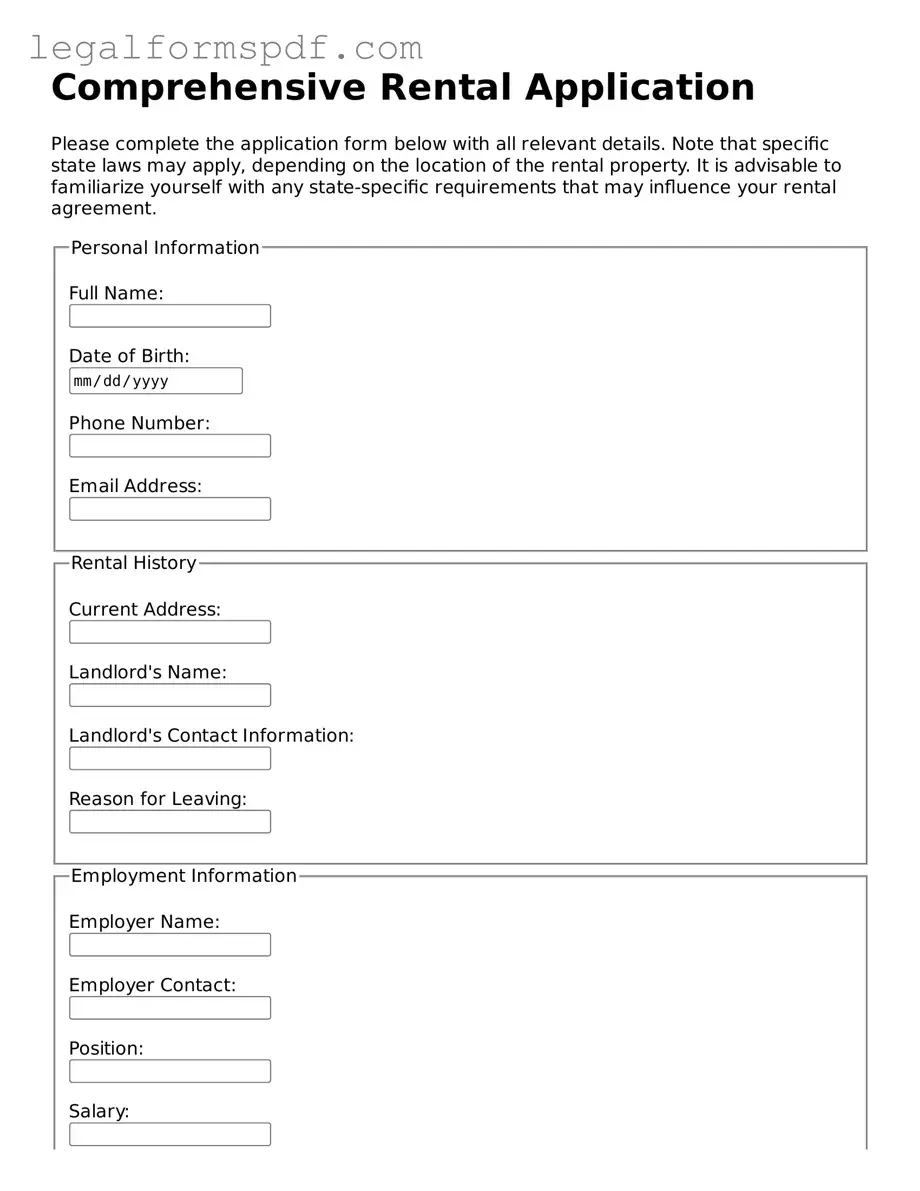What is a Rental Application Form?
A Rental Application Form is a document used by landlords or property managers to gather information from potential tenants. It helps the landlord assess whether the applicant is suitable for the property by evaluating their rental history, employment, and income. This form typically asks for personal details, rental background, and financial information.
Why do I need to fill out a Rental Application Form?
Filling out a Rental Application Form is the first step in the leasing process. It shows the landlord you are serious about renting the property and provides them with the necessary information to determine your reliability as a tenant. By evaluating your application, the landlord can ensure that you have a stable income and a good rental history, making you a less risky choice.
Is there a fee to submit a Rental Application Form?
Many landlords or property management companies charge an application fee. This fee covers the cost of processing your application and running background and credit checks. The amount can vary widely depending on the location and the landlord’s policies. It's important to ask about this fee before submitting your application as it is typically non-refundable.
What information will I need to provide in a Rental Application Form?
You will need to provide a range of information on your Rental Application Form, including your full name, current and previous addresses, employer details, income level, and references. Some forms may also require your social security number for a credit check, details about any pets, and personal references.
How is my privacy protected when I submit a Rental Application Form?
Landlords and property managers are expected to adhere to privacy laws and ensure the confidentiality of your information. They should only use your information for the purpose of assessing your application and not share it with unauthorized parties. If you have concerns about privacy, ask the landlord or property manager about their privacy policy before submitting your application.
Can I be rejected based on the information in my Rental Application Form?
Yes, a landlord can reject your application based on the information provided in the form. Common reasons for rejection include a low credit score, insufficient income, poor rental history, or a criminal background. However, it’s important to know that there are laws protecting against discrimination. Landlords cannot reject your application based on race, color, religion, nationality, gender, familial status, or disability.
What happens after I submit my Rental Application Form?
After submitting your Rental Application Form, the landlord or property manager will review your information, which may include conducting credit and background checks. They will then decide whether to offer you the lease. If your application is approved, they will contact you to discuss the next steps, which typically involve signing a lease agreement. In some cases, they might require additional information from you before making a final decision.
